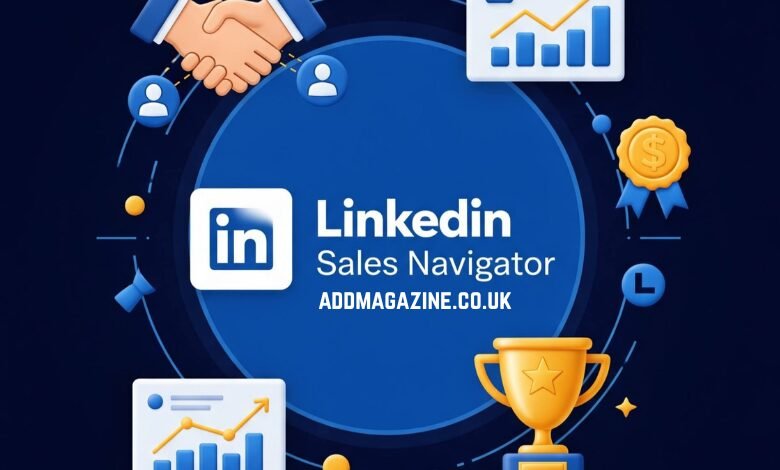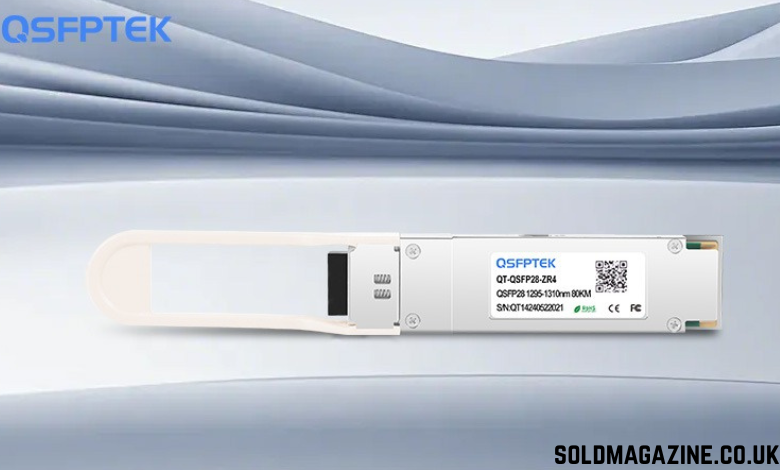If you’re working in B2B sales or marketing, LinkedIn Sales Navigator is probably already on your radar. It’s not just another LinkedIn premium tool—this platform transforms the way companies find, target, and build relationships with high-value prospects. Sales Navigator gives organizations a competitive edge by providing advanced lead generation tools, precise targeting, and actionable insights that can supercharge outreach and drive conversions across industries.
More teams are combining Sales Navigator with LinkedIn automation tools like LiProspect to streamline their workflows, boost their reach, and scale campaigns safely. In the sections ahead, this article dives into exactly how Sales Navigator empowers professionals to identify and engage the right people—sharing practical strategies to maximize outreach, lead quality, and sales efficiency every step of the way.
Understanding LinkedIn Sales Navigator for B2B Success
LinkedIn Sales Navigator is a specialized solution built on top of LinkedIn, designed specifically for sales professionals, marketers, recruiters, and business development managers focused on B2B outreach. It separates itself from regular LinkedIn by offering deeper search capabilities, smart filters, and powerful workflow tools to connect with decision makers from nearly any industry or region.
The platform gives users access to detailed company and contact data, real-time account updates, and advanced filters that help pinpoint precisely the right prospects—ensuring each outreach effort has the best shot at success. Sales Navigator isn’t just about searching, though. It allows for lead and account saving, making it easy to organize targets and track engagement over time for full-funnel selling.
For organizations driven by LinkedIn outreach, the value is clear. Teams using Sales Navigator enjoy richer insights, more effective prospecting, and the sort of relationship mapping that standard LinkedIn just can’t match. Features like InMail, buyer intent signals, and workflow integrations make it a go-to for any business looking to scale B2B outreach without losing that personalized touch. For a deeper dive into feature specifics, see LinkedIn Sales Navigator features breakdowns that show how it all fits together for B2B success.
Key Features of LinkedIn Sales Navigator That Drive Results
LinkedIn Sales Navigator stands out in the world of B2B selling for its range of built-in features tailored to help teams meet—and beat—their sales goals. At its core, it’s designed to connect professionals with the right prospects, using targeted filters, dynamic recommendations, and intelligent automation integrations to make prospecting less manual and more meaningful.
What makes Sales Navigator even more effective is how it adapts to the customer journey. Users can not only find ideal targets, but also nurture leads, customize segmentation lists, and seamlessly integrate with sales workflows and third-party platforms. Whether you’re looking to scale outreach or home in on hot accounts, Sales Navigator equips your team with the tools and real-time data needed to prioritize and convert high-value leads.
In the following sections, you’ll see how these features—advanced search options, personalized outreach, automation integrations, and more—work together to drive better results. Sales Navigator is more than a search tool; it’s a whole ecosystem for modern B2B professionals aiming to improve efficiency and close more deals.
Advanced Lead Search and Targeting Options
The advanced lead search and targeting options:
Granular Search Filters: Sales Navigator lets users filter prospects by job title, industry, company size, location, and even recent activity. This precision ensures you’re not chasing random contacts but targeting decision makers who truly match your ideal customer profile.
Boolean and Keyword Search: Craft detailed queries using keywords, AND/OR logic, and exclusions to uncover hidden prospects that might never show up in basic LinkedIn searches.
Lead and Account Recommendations: The platform uses AI to suggest new leads and companies based on your saved preferences—helping you find relevant, high-quality leads you might have missed.
Company Page URLs for networking: For businesses wanting to optimize their presence and boost outreach, knowing how to efficiently find and use LinkedIn company page URLs streamlines targeting and messaging, maximizing your brand’s credibility during prospecting.
Buyer Intent and Engagement Filters: Spot prospects showing interest through profile views, job changes, or active engagement—so you can prioritize timely outreach to those already in a buying mindset.
Personalized Outreach and Lead Nurturing Strategies
Crafting Tailored InMails: Use Sales Navigator’s InMail credits to send custom messages straight to prospects, skipping the clutter of regular emails. Personalized InMails grab attention and are proven to boost conversion rates—find more about how to maximize these with LinkedIn InMail strategies for modern outreach.
Multi-Touch Follow-Up Campaigns: Build relationship-driven campaigns that sequence messages based on prospect responses and engagement. Following up smartly keeps leads warm and increases chances of moving them down your funnel.
Leveraging Relationship Maps: Use the relationship explorer and mutual connections to request warm introductions, making outreach more personal and trustworthy.
Engagement-Based Nurturing: Track which prospects interact with your profile, content, or messages to send timely, relevant follow-ups that show you’re paying attention to their interests.
Integration With LinkedIn Automation for Scalable Outreach
Automating Campaigns: Linkedin Automation like LiProspect lets teams schedule, personalize, and send outreach messages at scale—freeing up time while maintaining a human touch. This automation is especially helpful for follow-ups and drip campaigns that might otherwise get lost in manual routines. See how to leverage this with basic LinkedIn automation or manage deeper campaigns by importing custom lists seamlessly.
Performance Tracking: Automation platforms track response rates, conversions, and engagement across all campaigns—giving clear reporting so teams can double down on what works.
Scaling Without Losing Personalization: Smart templates and dynamic fields mean outreach stays relevant even as efforts scale, making automation an enabler rather than a replacement for relationship building.
Improved Lead List Management With Custom Segments
Custom lead segments are a game-changer: Sales Navigator lets teams organize leads into tailored lists, making targeted outreach campaigns easier and more efficient.
Segments can be updated and sorted in real-time: Quickly prioritize follow-ups and reassign leads as soon as new data or company initiatives come up—keeping your pipeline organized and hot prospects front and center.
Segments support creative campaigns: Use custom filters to separate customers by region, industry, or engagement level for specialized nurturing or personalized messaging strategies.
Maximize conversion with segmentation: Focused lists mean better, faster outreach, and higher conversion rates across all campaigns. For more on segment management, you can explore options for lead segmentation in campaigns.
Actionable Insights and Analytics to Improve B2B Sales Performance
Sales Navigator offers robust analytics that empower B2B teams to fine-tune their outreach strategies and drive better results. The platform’s reporting dashboard shows who’s viewed your profile, which messages get responses, and how prospects interact with your content.
One standout metric is profile engagement—tracking which leads are actively engaging with you or your company page. This can signal buyer intent or tell you exactly when to follow up, shrinking sales cycles and improving conversion rates. Combined with real-time data on job changes and new connections, teams can pivot quickly to seize new opportunities or counter competitive moves.
Key metrics to watch include InMail response rates, saved lead/account engagement levels, and pipeline growth trends. Interpreting these numbers gives actionable feedback: double down on high-converting templates, drop what isn’t working, and use social listening to tailor future outreach.
For the data-driven marketer or sales pro, using this intelligence means every campaign gets smarter over time—delivering not just more leads, but better leads that are further along in the buying journey. Sales Navigator’s analytics turn gut feeling into measurable results, helping B2B sellers continuously optimize for maximum impact.
How LinkedIn Sales Navigator Boosts Marketing and Sales Alignment
Sales Navigator is not just for sales reps; it bridges the gap between sales and marketing teams for seamless collaboration. By sharing valuable lead data and engagement insights, both departments can work with a unified view of target accounts, ensuring no opportunities fall through the cracks.
Marketing can use Sales Navigator’s data to build campaigns that resonate with in-market prospects, while sales teams get instant feedback on message performance and buyer readiness. This alignment means both teams target the right people, speak the same language, and drive cohesive, revenue-focused campaigns—strengthening the entire B2B go-to-market strategy.
Sales Navigator Cost Considerations and ROI for B2B Teams
LinkedIn Sales Navigator comes in several tiers: Core, Advanced, and Advanced Plus. Pricing starts around $99.99 per user, per month (Core), with higher tiers unlocking more analytics, integrations, and automation capabilities. Each plan offers features like advanced search, InMail credits, lead recommendations, and CRM sync—all aimed at prospecting efficiency.
ROI for B2B teams comes down to lead quality and conversion rates. Sales Navigator’s ability to target ideal buyers, track engagement, and integrate with tools like LiProspect justifies the investment. Teams assessing costs can find a detailed breakdown of Sales Navigator pricing and automation value for an informed decision.
Common Challenges When Adopting LinkedIn Sales Navigator
Adoption Resistance: Getting sales teams to switch from traditional prospecting to a new platform can be tough. Habits die hard, especially with new tech.
Workflow Integration: Some find it challenging to connect Sales Navigator data with existing CRMs or sales processes without extra steps or IT help.
Ensuring Data Quality: Teams can struggle to keep saved leads and accounts up to date, risking outreach to wrong or outdated contacts.
Scaling Outreach Efficiently: Manual prospecting limits personalization at scale, leading to missed opportunities if automation isn’t used carefully.
Measuring Real Impact: Not everyone knows how to interpret the platform’s analytics for actionable improvements, slowing down optimization.
Overcoming Challenges With Automation and Best Practices
Facing some bumps while rolling out LinkedIn Sales Navigator? You’re not alone. Most B2B teams experience early hurdles, from integrating Sales Navigator into daily work to keeping outreach efforts efficient at scale. The good news is that pairing Sales Navigator with the right automation tools and best practices can turn these challenges into growth opportunities.
Automation platforms, such as LiProspect, help streamline repetitive tasks like follow-up messaging and data entry. They make it simple to sync Sales Navigator leads with your CRM, nurture prospects over time, and keep campaigns running smoothly without burning out your team. When proper compliance and personalization strategies are respected, automation becomes a bridge, making it easy to get all the power of Sales Navigator without the manual grind.
This section explores proven best practices, including safe automation integrations and profile optimization for outreach. The goal: equip you with actionable steps to overcome adoption resistance, keep your data clean, and boost sales productivity—delivering measurable, lasting value from your Sales Navigator investment. For practical ways to manage campaigns, you might look at basic setup guides or see how to import custom lists for more advanced workflows.
Best Practices for Integrating Automation With LinkedIn Sales Navigator
Stay Compliant with LinkedIn Policies: Industry experts stress keeping daily connection and message volumes within LinkedIn limits. Studies show users see up to a 30% increase in accepted connections using ethical, throttled automation (LinkedIn, 2023).
Use Advanced Targeting: Data-driven targeting (location, role, intent signals) can double response rates, according to a recent LinkedIn research report. Ensure automations always match lead criteria for relevance.
Personalize Messaging: Experts recommend dynamic inserts (company name, pain points) in every message. Personalized InMails have been reported to convert 2.6x better than generic ones
Track Outcomes for Improvement: Top-performing teams use analytics from platforms like LiProspect to benchmark conversion rates and refine campaign tactics for ongoing growth
Tips for Optimizing Your LinkedIn Profile to Enhance Outreach
Professional photo matters. Profiles with clear, industry-appropriate photos receive more connection requests and higher engagement.
The headline should highlight your value proposition. Use keywords and language that align with your target audience—making it easier to show up in searches and impress prospects.
Keywords make you findable. Include relevant skills, roles, and industry jargon throughout your profile for maximum visibility during advanced searches.
Custom LinkedIn URLs boost credibility. Learn how to find your linkedin url, share, or optimize your company page and profile URL through resources like this LinkedIn URL guide for better branding, outreach, and SEO benefits.
Regular updates keep your profile fresh. Prospects are more likely to engage with profiles that appear active and showcase relevant, up-to-date experience.
Getting Started With LinkedIn Sales Navigator and Automation
Ready to dive in? Start by signing up for LinkedIn Sales Navigator, then connect it with your preferred automation platform—something like LiProspect’s Sales Navigator campaign tool can help streamline your first steps.
Import your lead lists, set up targeted searches, and let automation handle the daily grind of outreach while you focus on building real connections.
It’s smart to keep safety first: always follow LinkedIn’s usage rules and scale messaging slowly. Track your campaigns, measure responses, and use the data to keep improving. If you’re curious, take advantage of any free trials or demos available to test the waters before committing fully.




